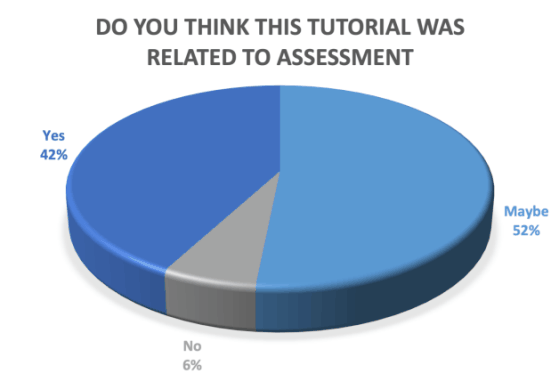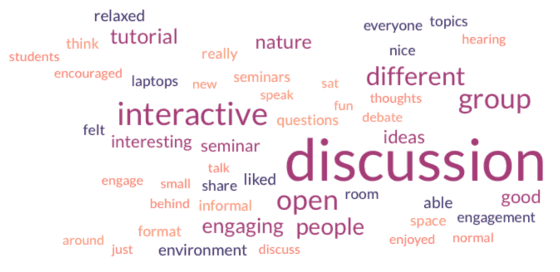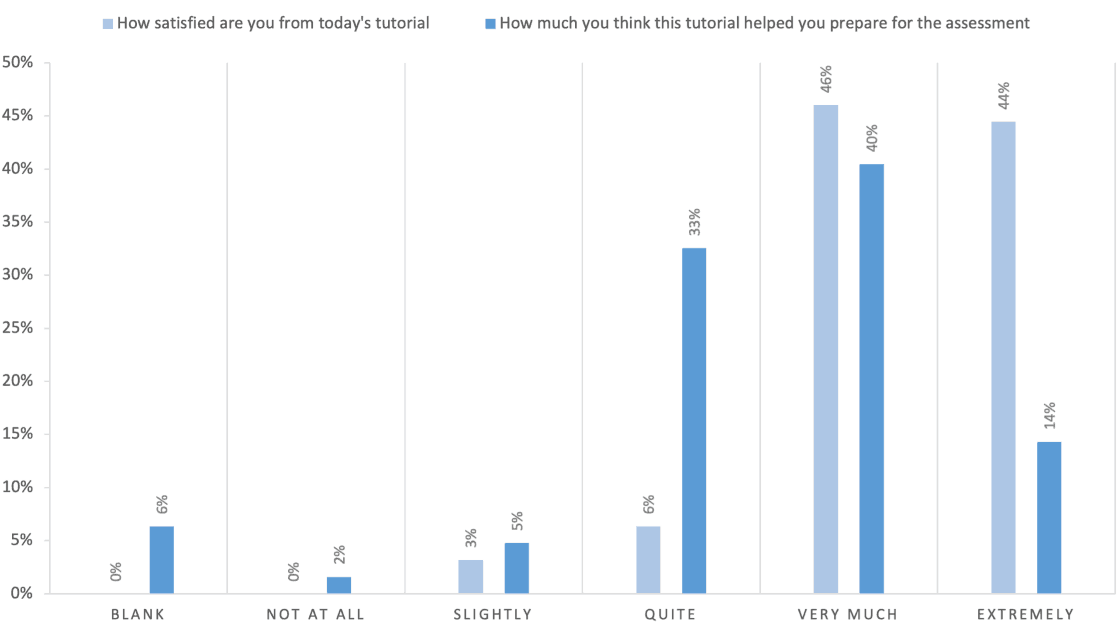Introduction and background
Existing research indicates that students and educators are often wary of group work assessments as these can lead to conflicts, free-riding, and discontent among learners (Davies, 2009). However, in industry or in academia, people need to work in groups, often with people they do not get to choose. Working well in a group is often difficult to master as it requires working with people from diverse backgrounds, cultures, and work ethics. Hence, building up the skills required for working as part of a team is crucial, as this is one of the key criteria employers look for (Indeed Editorial Team, 2023). There is plenty of evidence that shows that group work allows students to be active learners and to develop key skills like problem-solving, negotiation, conflict resolution, leadership, time management, etc. (Watkins, 2004). Students also get exposed to different sets of ideas and approaches.
Last spring, I designed and led a new third-year optional module on Economics of Crime with more than 200 students, largely from the discipline of Economics. This module is quite research-oriented and includes two open-resource assessments. One assessment involves a group work component with allocated and not voluntary group selection by students, which might create tension within groups. This group work component is an academic debate among (generally) four students, with two students supporting a motion and two students opposing it. A large literature explores the role debates play in enhancing students’ critical thinking abilities in different disciplines including social sciences (Kennedy, 2009; Vo and Morris, 2006; Doody and Condon, 2012; Jagger, 2013). Following this, I implement an alternative assessment through a pre-recorded video coupled with slides and individual reflections by each member of the group (Camp and Schnader, 2010; Shrestha and Roffey, 2018).
Playful classroom
To explore how to motivate my students to be more collaborative and inclusive (especially in group work assessments), I had followed a workshop on playful innovation in teaching at the University of Exeter (INNOPLAY, University of Exeter. (n.d.)., 2024). Learning from this workshop, I introduced an innovative way of fostering a collaborative spirit through playful small group seminars. Seminars on Economics of Crime consisted of around 25 students each, with 9 groups spread out through the teaching week.(note 1)
For the first set of tutorials, I used an alternative teaching space called the Creative Quadrant (CQ) at the Exeter Business School. This is an open space room without traditional classroom constraints of seating arrangements and can be adjusted and rearranged to the needs of each class. I chose this space as not only it lent itself well to the playful activity I introduced from the InnoPlay workshop, but it also allowed students to get away from their laptops and engage more with their cohort mates and the content of the tutorial. According to the anonymous student feedback I collected after the sessions, 95% of the students had never been in a teaching session in the CQ space before.
In advance of the tutorial week, I uploaded a newspaper article for students to read and come up with some for and against ideas for two pre-decided statements that were distributed through the module virtual learning space. I also informed students in advance that they should come to the tutorials with an open mind and that they may have to move in the classroom. When students came for the tutorials, they walked into a space without any obvious space to sit and open their laptops, with the background instrumental music of the Pink Panther theme (Mancini, 1963). I welcomed them commenting on this unusual setting as students arrived, which helped them to share any possible sense of anxiety about it being different from their usual learning environment.
In these sessions, at the beginning, students played rock-paper-scissors (RSP) in pairs. When they lost to their partners, they started cheering their opponents while the opponents played RSP with the winner of another student pair. These RSPs continued while the number of students cheering increased and in the final game half the classroom cheered each player. The RSP was followed by the debate topic discussions. The whole classroom was encouraged to discuss widely for and against arguments on the first debate topic and in the second students were asked to chat in groups of 2-3 and then summarize the key points. The exact format and setting of these sessions are described in Ghosh (2024).
Following each seminar, I asked students about their experience through an anonymous poll. The sessions concluded with guided reflections on the whole session. Students seemed to like the social aspect of the seminars with an anonymous comment mentioning, “Enjoyed how different it was, much more sociable too which is nice for economics”.
Practice and pedagogy
Literature has shown that playful learning can enhance (adult) student engagement, creativity, and innovation (Whitton, 2018; Hirsh-Pasek et al., 2020; Ferguson et al., 2019). My participation in the InnoPlay workshop opened my horizon to enhancing student engagement further in the classroom. The choice of article for discussion was intentionally ‘light’ such that students do not feel intimidated by the concept at the beginning and can use it to start engaging with their peers. This made the seminar more accessible but with frequent references to more ‘academic’ resources, as the session embodied a research-informed perspective. This is particularly beneficial as the students are in their third year and taking an optional module and more active engagement with the academic literature is important for them to enhance and apply their knowledge (Pezzino, 2020; Jeffries, 2009). Students seemed to also enjoy the debate aspect of the session and the engagement involved: “It forced discussion which normally is difficult to encourage in tutorials (myself included). And was interactive and engaging”.
Since I give students the chance to first share ideas with the wider group, they can start feeling comfortable. I sometimes pick and extend some of the ideas they share and lend more academic structure to their arguments. The smaller within-group discussion, following this, then makes everyone comfortable to share their thoughts within their groups. This practice is inclusive for them and they feel uninhibited to speak up, as they can disagree with others’ thoughts and offer their own (Bradford, 2022; Holley and Steiner, 2005). In answer to what they liked the most about the tutorial, students reflected: “Felt very relaxed and open to talk”.
I also made sure to ‘embrace the silence’ in the classroom (Zembylas and Michaelides, 2004; Ollin, 2008). Generally, when students are asked to openly share any thoughts on the debate, they often do not venture any ideas at all. This might be due to peer pressure, worries about getting the answer wrong, cultural differences, or natural shyness (Liu and Littlewood, 1997; Li and Jia, 2006; Marlina, 2009). I introduce prompts, for instance emphasising that the sessions are safe spaces and they can share even half-formed thoughts that we will work on together. This puts them in a less stressful mindset without any undue pressure. Moreover, to encourage everyone to speak and share ideas, I often state that someone who hasn’t spoken yet may want to share their views. I also highlight the need for them to embrace the ambiguity in similar research-led modules (Suzawa, 2013) and that often there are no wrong or right answers in discussing these questions.
I asked one of my colleagues to observe my teaching in one of these sessions and help me reflect more on how these sessions can be made even better. They provided much-needed important feedback on how to think more about the playful nature of the classroom, perhaps by introducing Lego Serious play (McCusker, 2014) or similar.
Implications and impact
These sessions were aimed to encourage students to have open and considerate communications with their group mates in the group assessment.
Figure 1: Student perception of the tutorial sessions relation with assessment

The tutorials were also designed to nudge them to recognise and support the best ideas within the group instead of opposing them; even if the best idea were not their own. As a result, this icebreaker activity (RSP) enhanced collaborative and inclusive spirits in a playful way. Students also came up with connections to the content and the RSP, e.g. in one of the debates we engaged in discussions on the hierarchical structures of criminal gangs and the astronomically low chance for low-level criminals to rise to the top of the power pyramid. Some students associated the chance of being the RSP winner with those odds and related the learnings to the game.
When asked if the students thought the tutorial was related to the assessments; approximately 42% agreed. Figure 1 above shows the proportions of students in each of the categories associating the tutorial with the group work assessment although 52% were not sure of this relation. In a different question students were asked how much did they think the tutorial helped them to prepare for the assessment. Figure 2 shows that a significant proportion of students (87%) thought that the tutorials helped them prepare for the assessment. This figure also shows that students were largely satisfied with the tutorials (more than 96%).
Figure 2: Student satisfaction and tutorial effectiveness for assessment (click to expand)
Analysis of the anonymous reviews suggests that students appreciate the opportunity to get out of hiding behind laptops: “I really liked the interactive nature of the seminar, very different but good to meet people and break the ice with fellow students. I think it was nice to get away from computers and chat instead”. They like a chance to have open discussions with their peers and exchange ideas in a fun way: “At first, It was different to many other tutorials in the way that we spent longer on discussion. But then I realised that it was very beneficial because it actually got answers out of us and got us talking! Great seminar.” Figure 3 below shows that students liked the discussion aspect of the tutorials and appreciated the interactive nature.
Figure 3: Student perception of the seminars

Conclusion and future steps
Playful classrooms work nicely towards breaking the monotony and getting students to focus on the key contents instead of only typing notes on their laptops. Indeed the analysis of student feedback shows that most students appreciated the interactivity of these sessions. The discussions were also useful to them as they were exposed to different ideas brought up by other students. However, these activities may lend themselves more to optional courses where students are self-selected and potentially highly interested in the contents. In future I want to consider if some more playful learnings can be incorporated in a more structured way during the course.
Notes
1. I use the words ’seminar’ and ’tutorial’ interchangeably in this article.
References
Bradford, A. C., “Getting Students to Speak Up: Classroom Atmosphere Is Key,” in English Teaching Forum volume 60 (2022).
Camp, J. M. and A. L. Schnader, “Using debate to enhance critical thinking in the accounting classroom: The Sarbanes-Oxley Act and US tax policy,” Issues in Accounting Education 25 (2010), 655–675. https://doi.org/10.2308/iace.2010.25.4.655
Davies, W. M., “Groupwork as a form of assessment: Common problems and recommended solutions,” Higher Education 58 (2009), 563–584. https://doi.org/10.1007/s10734-009-9216-y
Doody, O. and M. Condon, “Increasing student involvement and learning through using debate as an assessment,” Nurse Education in Practice 12 (2012), 232–237. https://doi.org/10.1016/j.nepr.2012.03.002
Ferguson, R., T. Coughlan, K. Egelandsdal, M. Gaved, C. Herodotou, G. Hillaire, D. Jones, I. Jowers, A. Kukulska-Hulme, P. McAndrew et al., “Innovating pedagogy 2019: Open university innovation report 7,” (2019).
Ghosh, A., “Playing learning and ‘crime’,” EduExe Blog, University of Exeter (2024).
Hirsh-Pasek, K., H. S. Hadani, E. Blinkoff and R. M. Golinkoff, “A new path to education reform: playful learning promotes 21st century skills in school and beyond,” Policy Brief, The Brookings Institution (2020).
Holley, L. C. and S. Steiner, “Safe space: Student perspectives on classroom environment,” Journal of Social Work Education 41 (2005), 49–64. https://doi.org/10.5175/JSWE.2005.200300343
Indeed Editorial Team, “8 Sought-After Skills Employers Look For,” Online; accessed 15 September 2023, (2023).
INNOPLAY, University of Exeter. (n.d.)., “INNOPLAY Studio. The Playful University Club.,” (2024).
Jagger, S., “Affective learning and the classroom debate,” Innovations in Education and Teaching International 50 (2013), 38–50. https://doi.org/10.1080/14703297.2012.746515
Jeffries, I., “Research-led Teaching at Swansea,” Ideas Bank The Economics Network (2009). https://doi.org/10.53593/n820a
Kennedy, R. R., “The power of in-class debates,” Active Learning in Higher Education 10 (2009), 225–236. https://doi.org/10.1177/1469787409343186
Li, X. and X. Jia, “Why don’t you speak up?: East Asian students’ participation patterns in American and Chinese ESL classrooms,” Intercultural Communication Studies 15 (2006), 192.
Liu, N.-F. and W. Littlewood, “Why do many students appear reluctant to participate in classroom learning discourse?,” System 25 (1997), 371–384. https://doi.org/10.1016/S0346-251X(97)00029-8
Mancini, H., “The Pink Panther Theme,” (1963).
Marlina, R., ““I don’t talk or I decide not to talk? Is it my culture?”—International students’ experiences of tutorial participation,” International Journal of Educational Research 48 (2009), 235–244. https://doi.org/10.1016/j.ijer.2009.11.001
McCusker, S., “Lego®, Serious Play TM: Thinking about teaching and learning,” International Journal of Knowledge, Innovation and Entrepreneurship 2 (2014), 27–37.
Ollin, R., “Silent pedagogy and rethinking classroom practice: Structuring teaching through silence rather than talk,” Cambridge Journal of Education 38 (2008), 265–280. 6 https://doi.org/10.1080/03057640802063528
Pezzino, M., “Bringing research outputs and processes into the Economics curriculum,” Ideas Bank The Economics Network (2020). https://doi.org/10.53593/n3323a
Shrestha, M. and C. Roffey, “An alternative to traditional assessment: the debate showcase,” Journal of Education and Research 8 (2018), 5–31. https://doi.org/10.3126/jer.v8i2.22888
Suzawa, G. S., “The learning teacher: Role of ambiguity in education,” Journal of Pedagogy 4 (2013), 220–236. https://doi.org/10.2478/jped-2013-0012
Vo, H. X. and R. L. Morris, “Debate as a tool in teaching economics: Rationale, technique, and some evidence,” Journal of Education for Business 81 (2006), 315–320. https://doi.org/10.3200/JOEB.81.6.315-320
Watkins, R., “Groupwork and assessment,” in The Handbook for Economics Lecturers, The Economics Network (2004). https://doi.org/10.53593/n380a
Whitton, N., “Playful learning: tools, techniques, and tactics,” Research in Learning Technology 26 (2018). https://doi.org/10.25304/rlt.v26.2035
Zembylas, M. and P. Michaelides, “The sound of silence in pedagogy,” Educational Theory 54 (2004), 193–210. 7 https://doi.org/10.1111/j.1741-5446.2004.00014.x
↑ Top

